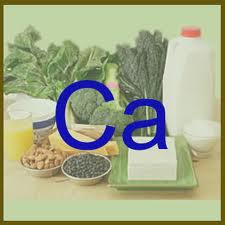This article is great because it recognizes that there is a current calcium crisis in America. The article also provide the reader with the actual dietary recommendations of calcium intake for all ages as stated below:
• 1-3 year of age = 500 mg of calcium daily
• 4-8 year of age = 800 mg of calcium daily
• 9-18 year of age = 1,300 mg of calcium daily
• 19-50 year of age = 1,000 mg of calcium daily
• 50+ year of age = 1,200mg of calcium daily
Along with the crisis the article shares its concern with child developed due to the lack of meeting recommended calcium intakes. Here is a quote from the article that concludes those thoughts, "”As stated by the National Institute of Child Health and Human Development(NICHD), children’s low calcium intake is … a growing problem and a serious threat to their later healthy growth and development” .This quote was pulled directly from the article highlighting the nation concern of children’s low calcium intake.
One benefit to reading this article was that it covered the current factors that in fact influencing the low dietary calcium consumption. It dedicated a section of these factors to the recent research, which shows that people are substituting soft drinks for milk. This is represented in a graph in the article that you should definitely look at.
Coinciding with the factors influencing dietary calcium consumption, another major factor was that eating outside the home. “In 1995, the calcium density of away from home food was 343 mg per 1,000 kilocalories, whereas home foods had a calcium density of 425 mg per 1,000 kilocalories.” This quote from the article highlights the difference in calcium intake when eating outside the home, and how when you do eat at home you will probably be consuming more calcium.
Coinciding with the factors influencing dietary calcium consumption, another major factor was that eating outside the home. “In 1995, the calcium density of away from home food was 343 mg per 1,000 kilocalories, whereas home foods had a calcium density of 425 mg per 1,000 kilocalories.” This quote from the article highlights the difference in calcium intake when eating outside the home, and how when you do eat at home you will probably be consuming more calcium.
One section of this article I found interesting was that one major problem of limiting calcium intakes in children was a direct reflection of the parents. I am when you think about it the parents buy, choice, and cook the food that their children will at least while at home. If parents can be more proactive in their food purchases and their preparations of that food their children will defiantly benefit from it. Also the article stated that there is an increase in soda consumptions when families eat together at the dinner table.
Calcium is not bad fat! I learned this through this article that most people think that by cutting down their consumption of dairy products will result in weight loss; however, this article discuses the complete opposite. One fun fact I learned from this article was that low-fat milk contains the same amount of calcium as whole milk. It also supports the consumptions of calcium-fortified foods, like soymilk. Also this article shares health benefits of consuming calcium rich foods. Some benefits they communicated were reducing risks of osteoporosis, hypertension, colon cancer, stroke, and also can help maintain weight control. Check this article out is really helpful!

No comments:
Post a Comment